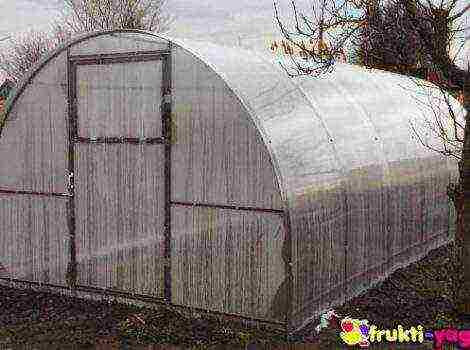Currently, there is a great deal of interest in aquarium predator fish. Some hobbyists say that it is rather boring to observe the small representatives of the underwater world. The behavior of large predators is truly fascinating. Vivid representatives of the inhabitants of the aquarium can be called aquarium pikes, similar to the inhabitants of the rivers.
Shell pike in natural conditions
In Central and North America, Cuba, in the Caribbean, there is an armored pike species. She loves fresh, or slightly salty water. Sometimes she can be found at sea. This species was known about 200 million years ago. You can see 7 species of armored pikes. They are predators. The body is covered with thick scales like armor. The pike has elongated jaws with sharp teeth. The coloration is spotty, which makes it look like a simple river relative. The pike looks like an alligator.
The armored pike grows to enormous size. Weight can reach 130 kg, length - 3 meters. They are aggressive and very dangerous. Attacks of this predator on humans are known. Her meat is edible, but little is used for food, it is very interesting for sports fishermen. Not everyone can catch such a giant. She has been living for 18 years. Its color is from yellow to brown. Pikes have scales that are hard as stone. Other features:
- elongated jaws;
- sharp teeth;
- variegated color;
- heavy weight;
- long body;
- hard scales.
Aquarium pike
Many predatory fish are adapted to live in aquariums. Armored aquarium pikes are no exception. They live quietly in aquariums, despite the exotic appearance, with satisfactory food intake and suitable neighbors. Large individuals need a spacious container. They usually contain young fish that show aggression towards other species and even towards their relatives. There are several types of these individuals:
- The common pike is the standard predatory fish species that can exist in an aquarium. It does not reach large sizes in captivity. It is not recommended to keep it in a tank containing less than one hundred and fifty liters. An important condition is that the water temperature is maintained within 18-20 degrees. Raising the water temperature to 22 degrees marks a temperature shock and can lead to death. This variety has hard scales that look like a carapace. The length of armored pikes in nature reaches 120 cm, in captivity - 60 cm. The jaws are with sharp teeth, the body is elongated. The swim bladder is used in fish during the respiratory process.
- Viviparous pike belonezoks. Belongs to the carp family and eats the same food. Viviparous belonezoks are 12 cm long, males - 20 cm, long stigma, crooked teeth, because of which it is difficult for the fish to close its mouth completely. This species is distinguished by its ability to live birth. This is the peculiarity of this species. The female produces live fry. Fertilization of eggs occurs in the body. Belonesis are fertile. The appearance of offspring occurs after a period of 38-40 days.
- Armored pike. A common predator. Placed in a spacious tank, the fish grows up to 39 cm in length. In a small container, it ceases to increase in size, starting to add in volume. Fish differs from other species in its structure. Its vertebrae do not have a depression on 2 sides, but only on one side. On the opposite side, they are convex, which is typical for amphibians. This fish has a swim bladder that helps with breathing, and also has hard scales that resemble geometric tiles. Under natural conditions, pikes reach a size of about 120 cm, when kept in captivity only 60 cm. Fish have powerful jaws with sharp teeth.
Carapace
A representative of the popular aquarium predators is the armored pike. For normal growth, she needs a spacious container. With its exotic appearance, the fish is unpretentious. Likes to swim at the top of the aquarium. Larger neighbors at the bottom. This gives a peaceful existence.
These pike are predatory fish that are relatively large and suitable for free tanks. Aquariums predominantly contain young individuals. However, they are aggressive. Fish can be kept in ponds. Sometimes the shell pike in the aquarium will eat small fish, for this reason it cannot be kept near them. Has dense scales, tolerates loneliness well. But by choosing the right neighbors, it can be hooked up with other predators.
They prefer to swim closer to the upper layers. The water should be 18-20 degrees, and for the comfort of the shell 12-20 cm. For viviparous individuals, a warmer water temperature is needed. Create a gentle movement of the water, because the fish loves to swim in river water. Carapace pike and common pike are indifferent to green algae. On the contrary, viviparous prefer to hide in thickets. Fix the aquarium decorations so that predators do not damage the interior.
Adults are fed:
- fresh fish;
- squid;
- bloodworm;
- shrimp.
Pike preference is still given to natural food.
Aquarium and water requirement
A spacious aquarium of about 150 liters is required. And for larger fish - 500 liters. Parameters: temperature 4-20 degrees, hardness dH 8-17, acidity pH 6.5-8. Aeration and filtration are required. There may be a little greenery, because it is more desirable for the fish to free up more space so that they can move. The design does not play a big role, just fix the elements and decorations more securely.
Breeding them in backyard ponds is favorable. They feel great there. Pikes have an excellent appetite. They eat small fish and are very voracious. When well fed, the fish resembles a floating log. Do not put pikes with small fish. Due to its greed, the armored pike in the aquarium sometimes gets into fights over food. In the absence of fresh fish, they can feed on squid, bloodworms, shrimps. But live fish for pikes is a usual essential food. If you follow these simple rules, you can observe the behavior and habits of armored pikes.


